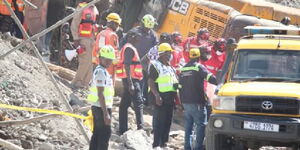Ambulances worldwide are specially designed vehicles meant to offer emergency services for patients needing urgent medical attention.
Kenya, as in other nations, has classified ambulances as vehicles with a right of way, meaning that other motorists are obligated to pave the way whenever in traffic.
To serve their purpose, ambulances come with special modifications from the interior, to the exterior features informed by various technologies.
One such feature is the inverted bold word ambulance painted at the front of the vehicle in reverse. The inversion is done on purpose and has a physics-related explanation to it.
The explanation is anchored on lateral inversion, which refers to the reversal perception of images formed in a mirror or a flat plane.
The left side of an object on a mirror image appears on the right in a mirror, and the right side appears on the left.
In the context of an ambulance, the concept is employed to help drivers ahead of an ambulance to correctly and easily perceive the presence of an ambulance while looking at the side mirrors.
The inversion is, thus, done on purpose to help drivers viewing it from the rear mirror easily read and deduce that it is an ambulance and consequently encourage them to give way quickly.
In other jurisdictions, emergency vehicles, such as those used by police officers, are inverted for the same purpose.
The bold painting of the inverted word ambulance thus helps to draw required attention to the essential service vehicles, especially in heavy traffic situations.
Besides the lateral inversion concept, automobile manufacturers also conform to other guidelines prescribed by international standards to ensure the design meets its needs.
Other specifications prescribed by the international standards include having two compartments- one for the driver and another for the patient, two-way radio communication, and audiovisual traffic warning devices.












